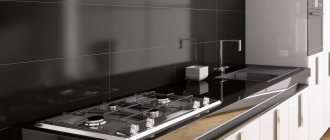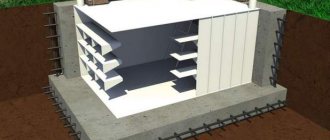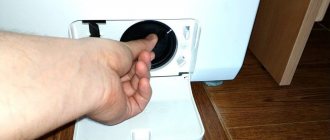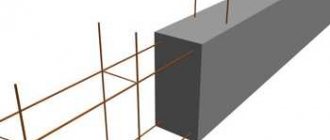For those who bought a kitchen set earlier, a dishwasher might seem unnecessary, so space was provided only for an oven, gas stove and microwave. But now, when washing household appliances are becoming more and more popular, the question of their placement becomes acute.
To figure out how to integrate a dishwasher into a ready-made kitchen, it is worth delving into the existing options, already tested by users, and studying the variety of device housings, which will help you choose the right one, suitable for installation in specific conditions.
Features of installation of PMM depending on its type
The installation of this equipment depends on the type of dishwasher. In turn, the type of such a device is often selected based on the features and placement of kitchen furniture, as well as the size of the kitchen. Thus, installing a dishwasher in a finished kitchen can cause difficulties if the room is small and already densely packed with furniture and equipment. The built-in machine can only be installed in the niche intended for it. Installing a tabletop dishwasher in this sense is easier, but there are also not so many places suitable for this equipment. The best option is to think through the kitchen interior and the place of household appliances in it in advance. However, this option is not always possible.
If there is very little space for placing equipment, compact small-sized models are installed, the width of which is approximately 60 cm. Such a device can simply be installed in a cabinet above the sink or on a table. The disadvantage of compact models is their small capacity - usually they can be loaded with up to five units of various utensils, but in a small kitchen they are indispensable.
The so-called narrow models are more spacious. They are narrower than full-size devices, but larger than compact ones, and their functionality usually does not differ from the functionality of full-size devices. There are free-standing devices, and there are also built-in ones. For free-standing appliances, as a rule, there are several placement options, and if necessary, they can be moved around the kitchen. Built-in models can only be installed in a certain niche in the kitchen set.
Finally, full-size models can also be free-standing or built into a set. The installation of such equipment is no fundamentally different from the installation of narrow PMMs, but devices of this type may simply not fit into a cramped kitchen.
What to look for when choosing dishwashing equipment
The advantages of a built-in dishwasher over a free-standing one are that it significantly saves kitchen space and fits harmoniously into the finished design. All you have to do is decide what size machine you need and correlate the dimensions of the equipment with the location of its intended location.
Choosing a size
Built-in dishwashers come in several sizes, and, accordingly, can accommodate different amounts of dishes.
Table 1. Dimensions of dishwashers
| Size | Dimensions in centimeters | Maximum capacity (in number of place settings) |
| Mini | 50/50/55 | 5 |
| Narrow | 45/55/85 | 8 |
| Full size | 60/60/85 | 17 |
Please note: different equipment manufacturers may vary in size by up to 5 cm.
How to plan the installation of installations of various sizes, drawing
Mini dishwashers are convenient because they can be built into a small kitchen, even under a sink or in a pencil case, since it is similar in size to a microwave oven and its location at eye level is quite convenient. Narrow units should only be purchased if you do not have a large family. It is advisable to choose full-size ones if you have a lot of relatives and the house is full of guests. But, you need to understand that such a machine will take up more space in the kitchen.
There are different types of machines, the body dimensions of which may vary.
Energy efficiency classes and labeling
Electricity consumption and energy efficiency are also important points to pay attention to when purchasing. Manufacturers are required to indicate the energy efficiency class for each product.
As a rule, it is indicated on a sticker that is pasted on the device itself or placed in a package with documents for the equipment. Classes are marked with Latin letters: A+++, A++, A+, A, B, C, D (until 2010, the markings were indicated by the letters A, B, C, D, E, F, G), where, respectively, class A +++ – the most economical model in terms of electricity and water consumption.
How energy efficiency classes are marked for various types of dishwashers
But the price for such models will be significantly higher than for a product with a subsequent gradation of classes. The sticker should also indicate:
- product model and brand;
- water consumption in liters per cycle;
- electricity consumption per cycle (kWh);
- drying class (A - G);
- number of sets of dishes;
- class of noise produced in decibels.
Explanation of the symbols found on the sticker that is equipped with the dishwasher body
Optimal dimensions of PMM
The dimensions of the purchased PMM are largely determined by the size of the kitchen and the features of the kitchen unit. The height of built-in models is usually the same; it corresponds to standard niches in furniture (820–870 mm). Width may vary. If you are purchasing a model for an existing niche, it is recommended that you measure this niche yourself in order to select a model that matches it when purchasing. If this has not been done in advance, such measurements will still have to be made before installing the dishwasher.
The situation is simpler with stand-alone machines. They are not tied to a niche; there may be several installation options. If the equipment is installed incorrectly, it can be rearranged. It is better, of course, to pre-determine the place where the PMM will be placed and, based on this, select a device of optimal dimensions. How to install it correctly is described below.
In some cases, the optimal dimensions of equipment are dictated not by any restrictions related to the size of the kitchen or furniture, but simply by its sufficiency for the family. In fact, why buy a full-size model, if even the narrow one has more than enough capacity.
Types of materials and decor of furniture facades for a dishwasher
Various materials are used to produce dishwasher fronts.
Basically it is MDF. Since it is he who is able to withstand temperature changes and high humidity that occur during operation of the equipment. In addition, they are safe and do not contain substances harmful to human health.
Natural wood is rarely used in the production of furniture for a built-in dishwasher, since it is a very expensive material that requires a high-quality top covering.
Preparatory work before installation of the PMM
You can entrust the installation of PMM to specialists. In this case, you do not need to worry about the correct order of actions when embedding or installing equipment. The workers who installed the machine will also be responsible for the final result. But if you are installing the device yourself, it is useful to have an idea of the preparatory work before installation. This applies to choosing a location for installation, as well as preparing the tools and materials that will be needed during installation.
Choosing a location based on size
As mentioned above, built-in PMMs must correspond to the dimensions of the niche specially designed for them; there are no other options; they will have to be built into it. If this location is unsuccessful, it is difficult to operate the device installed there, you will have to think about partially redoing the furniture, ordering a separate cabinet to install the PMM in it, or even completely replacing the kitchen unit. The classic place for a niche for such equipment is the area around the sink - there are usually no problems with connecting communications there. How a dishwasher is built into a kitchen is discussed in detail below.
A freestanding dishwasher can theoretically be installed anywhere, but in reality there are always limitations associated with the ability to connect communications to it or ease of use. In order to correctly install the equipment, you should first determine all possible places for its installation, taking into account the dimensions of the PMM. It may happen that the desired model simply does not fit into the existing kitchen configuration. There may be two options here - remodeling the kitchen or purchasing a more compact model that fits into the existing layout. The easiest way is to determine the location for the tabletop model. This is any flat surface that is convenient to reach; you can supply water, connect the drainage system and connect electricity.
Required tools and materials
Before installing a dishwasher in a finished kitchen, you need to prepare the appropriate tools and materials. If you plan to install a compact dishwasher on a countertop, then you can get by with a small set of tools; usually everything you need is always at hand. You may only need a screwdriver and pliers. If you need to build a dishwasher into a finished kitchen or install a full-size free-standing model, you will need more tools. Often the user manual will indicate what tools may be needed for installation. Just in case, it is useful to have the following set of tools and materials on hand:
- screwdriver or drill;
- flat and Phillips screwdrivers of different sizes;
- hammer and chisel;
- pliers;
- knife;
- shears for metal-plastic pipes;
- adjustable wrench;
- tee and stopcock (if necessary) ¾ inch size;
- FUM tape and tape.
Of course, this list can be supplemented in some cases; it is difficult to determine exactly in advance how much will be needed. It all depends on the specific conditions, features and complexity of installation.
Methods for attaching furniture fronts to a dishwasher
It is important not only to choose a front for a dishwasher, but also to install it correctly.
Depending on the installation method of the equipment itself, facades can be mounted by:
- full installation - in this case, the facade completely hides the body of the equipment;
- partial embedding - the door covers only the main part of the machine, and the control panel remains visible.
And according to the method of fastening, there are two methods of installing doors:
Curtain facades guarantee uniform load distribution between the doors of furniture and appliances. The only disadvantage of this solution is the complex arrangement of fastenings and the presence of a gap between the doors.
In the pantograph system, the facade is attached directly to the car door. The main advantage of this method is the absence of gaps between the doors - dirt and moisture cannot accumulate there. In addition, the pantograph does not require a complex synchronization structure, which is used in mounted products.
Step-by-step instructions for installing PMM: free-standing
Having decided the question of how to place the PMM, and having prepared the necessary tools and consumables, you can begin installing the device. When installing a dishwasher - Electrolux, Indesit, Bosch or any other - you must first of all decide on its location. When deciding where to put the equipment, you need to consider the following points:
- the distance from the installed device to the point of discharge into the sewer should not exceed one and a half meters, otherwise the equipment will fail much faster;
- It is advisable that there is an outlet close to the installation site; if this is not the case, then you can use an extension cord, or better yet, connect the power supply;
- for a tabletop model, it is enough to fix the drain hose in the sink - the waste water will go away by gravity.
After selecting the installation location, as well as preparing the necessary tools and materials, the procedure is as follows:
- Disconnect the mixer hose from the metal-plastic water pipe (only cold water is used for supply).
- We mount a tee and connect the mixer and PMM hoses to it. When connecting, we wrap FUM tape onto the thread.
- We connect the PMM drain hose to the siphon under the kitchen sink. In this case, a bend must be formed at the connection point with an upward angle so that dirty water leaving the sink does not enter the machine. Such an angular bend is provided by a special adapter.
- Next, the electricity is connected. The electrical outlet must be grounded and the wiring must withstand 16 A of current.
- Using a level, we level the installed device and check how it functions - how quickly water flows in and out. Among other things, it is necessary to check the joints and hoses for leaks.
To increase the service life of the described equipment, you can additionally install a fine water filter, which will purify the water entering the PMM.
How to install a built-in dishwasher yourself
Installing a built-in dishwasher is generally similar to installing free-standing appliances, but there are still some features of this process. The installation process is influenced by the type of machine, the location of the water supply and sewerage, as well as the electrical wiring. Let's figure out how to install a built-in dishwasher.
Possible embedding options
As mentioned above, built-in equipment is mounted only in a special place. In addition to installing a built-in dishwasher in a typical niche found in a kitchen unit, such devices are installed in a separate module or built into a cabinet. You can place the machine under the countertop or even place it under the hob. Let's take a closer look at how to integrate a dishwasher into the kitchen for each option.
Into the cupboard
The kitchen set does not always have a ready-made special niche for PMM. In these cases, when deciding how to integrate a dishwasher into the kitchen, you can use a cabinet under the countertop of suitable sizes. The requirements for its location are the same as for free-standing models. To use the cabinet, you will have to dismantle its doors, shelves, and the back wall. During installation, the equipment must be securely fastened. You can also install a free-standing device in the same cabinet, without the need to dismantle the cabinet doors.
In a separate module
Another option for solving the problem of the lack of a special niche for built-in equipment is to custom-manufacture a free-standing module into which the device is mounted. This module must be installed according to the same rules as free-standing models - no further than one and a half meters from the water intake and drainage points, and there must also be access to the electrical network. Externally, such a module is usually made in the style of the rest of the kitchen furniture.
To a niche
This option is the easiest to install. A special niche for this equipment is usually located next to the sink; the necessary communications are easily connected to it, and installation work is simplified. The niche can be located under the countertop, or it can be located in some larger module at the countertop level - it all depends on the design of the kitchen unit.
Installation procedure for the built-in model
As a rule, instructions for installing such equipment are available in the user manual. It describes in detail how to install a dishwasher, and if you wish and have the appropriate skills, you can do it yourself. If the installation is carried out independently, then before starting it is worth studying these instructions carefully. Installation of different models may have its own characteristics, but basically this process is the same for all devices. Let's look at the step-by-step procedure for installation.
Tools, consumables
To begin with, before integrating a dishwasher into a finished kitchen, you need to take care of selecting the necessary tools. The basic set of tools was listed above in the description of the installation of free-standing devices. In addition, the package includes various consumables used during installation. It is recommended to think through and think through the installation stages in advance, understand where everything is attached, and based on this, prepare everything you need so as not to be distracted by searching for this or that tool during work.
Checking the contents
In principle, this procedure should be carried out in the store, during the process of purchasing PMM, or when delivering the purchased equipment to your home. In addition to the device itself, the package should include a user manual - usually with an installation diagram and a description of the installation procedure. In addition, the package usually contains various fasteners, hoses, gaskets, various consumables, etc. The presence of all this must be checked with the equipment list, it is also in the package. If there are no installation instructions in Russian, you can search for them on the manufacturer’s website. But usually there is a manual in Russian.
Siemens models often have non-standard dimensions - you need to take this into account when purchasing them and carefully measure both the dishwasher and the place where it is intended to be installed.
Niche installation
Before starting installation of built-in appliances, it is recommended to check that the dimensions of the device allow it to be installed in a niche. In addition, the hoses must reach the water supply and the power cord must reach the electrical outlet. Further installation steps are as follows:
- you need to install the device opposite the niche;
- pull the power cord through the niche towards the outlet, and the hoses to the points of water intake and drainage;
- place the device in a niche and at the same time stretch the cord and hoses to the end points;
- then proceed according to the instructions - install and secure the parts supplied with the PMM, various angles, stops, dampers, seals, etc.
- Use a level to check how level the device is and, if necessary, level it.
Connection to sewerage
After installing the dishwasher in the kitchen, you need to connect its drain to the sewer. To do this, the drain hose is connected to a siphon under the kitchen sink. The siphon must have an additional hole for draining from the PMM. If there is no such hole, you will have to change the siphon. At the connection point of the drain hose, a bend should be formed with an upward angle so that dirty water drained from the sink does not enter the PMM. You can directly insert the drain hose into the sewer pipe, however, a siphon scheme is preferable, because At the same time, the spread of sewer odors is blocked.
Connection to water supply
Next, you should ensure the connection of the built-in equipment with the water supply. First you need to disconnect the mixer hose from the water pipe. Next, a tee is mounted at the connection point and the water supply hose to the PMM and the mixer hose are connected to it. What is very important, only the water pipe through which cold water is supplied is used for connection. It is also recommended to install a water purification filter, which should purify the water entering the device. Using such a filter significantly increases the service life of the device.
Power connection
After installing and connecting the dishwasher to the water supply and sewerage system, you need to connect it to a power source. The best option is for the dishwasher's power cord to reach the nearest outlet. Otherwise, you have to use an extension cord, which is generally undesirable, since this technique is quite powerful and the extension cord gets very hot. You can connect the outlet directly to the dishwasher. If you do not have the appropriate knowledge and experience, it is better to entrust such an operation to a specialist of the appropriate profile.
Checking for leaks
After installing the dishwasher and connecting all communications to it, the functionality is checked and at the same time checked for water leaks during operation of the device. The device starts without dishes, but with detergent loaded. It is necessary to check whether there are leaks at the connections of the hoses to the dishwasher, water supply and sewerage. In addition, if the appliance is tilted too forward or to the side, a leak may form through the dishwasher door. Electrolux models are considered the most sensitive to this problem. This problem can be resolved by installing the device using a level.
Neighborhood: dangerous and not very
It is not advisable to install the dishwasher close to other kitchen appliances. It is necessary that there is not too small an air gap between the devices. It would be optimal if these devices are separated by some kind of cabinet, even a narrow one. Of all the household appliances, proximity to the oven is the most undesirable because of its strong heat. Placing such equipment close together is not allowed. It is also not a good option to place the dishwasher next to the washing machine due to its vibration during operation. A nearby microwave can cause problems for electronics. But the proximity to the refrigerator is practically safe; it is allowed to place them next to each other.
If you are not confident in your own abilities, you can entrust the installation of the dishwasher to the specialists of the service center, which is engaged in servicing the purchased model.
Neighborhood: dangerous and not very
Correct installation of any household appliance guarantees its long and uninterrupted operation. Therefore, it is important to pay attention to the advice of manufacturers and specialists so that your mechanical assistants work efficiently and for a long time. Let's look at a few of the recommendations.
Tip 1. It is not recommended to install a built-in dishwasher from the very edge of the kitchen unit as its extension, otherwise you will have to additionally order cabinet parts and countertops from furniture makers.
Tip 2. The dishwasher should be placed away from any heat sources, be it a radiator, oven or hob. The recommended distance from the oven should be at least 40 cm; some manufacturers even indicate this in the installation instructions. Failure to comply with this rule may result in the service center refusing warranty repairs.
The dishwasher must be installed in a specific place in the kitchen, taking into account the location of other built-in units
In addition, excessive heat will cause the machine to overheat, which will affect the quality of the seals, which will dry out very quickly and become unusable. If, nevertheless, the dimensions of your kitchen do not allow you to install the appliances at the required distance from each other, then lay a sheet of foil polyethylene between the appliances.
Tip 3. It is not advisable to place dishwashing equipment close to the washing machine. During the wash and spin cycle, the washing machine vibrates quite strongly and hits neighboring objects, which is quite destructive for them.
It's only worse if you turn on two devices at the same time. The vibration of one device, transmitted to another, can break fragile dishes located inside the washing chamber.
The dishwasher should not stand next to the machine, the latter can cause serious damage to it.
Tip 4. The seemingly harmless microwave oven does not have a good effect on household appliances. The electromagnetic waves it emits can have a negative effect on the electronics of washing machines and dishwashers. Ideally, it is generally better to hang the stove on special brackets that are attached to the wall or place it at a distance of at least 50 cm from any household appliances, but this is not always possible.
Tip 5. The dishwasher will easily tolerate proximity to the freezer and refrigerator. It does not heat up very much and vibrates very slightly, which does not in any way affect the operation of nearby equipment.
But we can place the device we are interested in next to the refrigerator, since it will be a completely safe neighborhood for it
Useful tips when installing PMM
When installing dishwashers of various types, it is advisable to adhere to the following recommendations:
- the gap between the wall and the back wall of the dishwasher should be at least five centimeters - this will ensure normal air circulation and prevent overheating;
- during installation, you should first of all follow the installation rules set out in the user manual;
- Do not ground gas or water pipes;
- Extension cords for connecting power supply are used as a last resort, because they can overheat to the point of ignition;
- The drain of a compact dishwasher is often led simply into the sink, but it is advisable to secure the drain hose (for example, with tape) or constantly monitor it while the dishwasher is operating, because this hose can easily fall out of the sink;
- If problems are discovered during testing of the installed dishwasher, they cannot be corrected without draining the water and disconnecting the device from the power supply.
In conclusion, we note that installing a dishwasher can be done with your own hands, strictly following the manufacturer’s instructions and the recommendations of specialists. But if you lack the appropriate skills, or the installation conditions are clearly difficult, it is better to entrust this work to specialists.
Plastic
Plastic products should not be washed in the dishwasher due to the risk that they will melt and become deformed when exposed to high temperatures. You can only load dishes made of heat-resistant plastic into the machine, which are marked with the appropriate approval mark.
| One of the icons that gives the go-ahead for washing plastic dishes in the dishwasher. |











